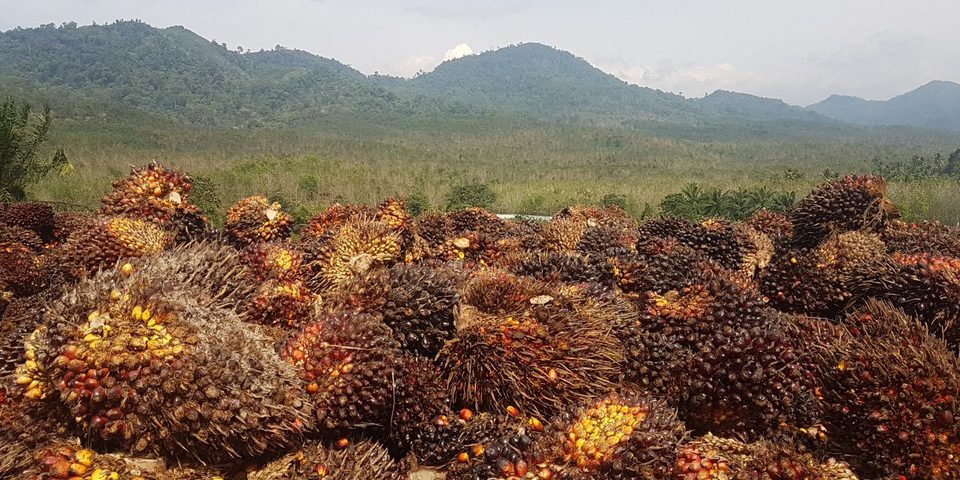Jakarta – Smallholding palm oil farmers are no strangers to being made a scapegoat for forest destruction across Indonesia. But deep in the heartland of North Sumatra, the farmers show that with the right skills and knowledge, they can also become frontline guardians of the forest.
Among the 26 provinces in Indonesia that produce palm oil, North Sumatra’s output is second only to Riau’s. The province has 1.8 million hectares of palm oil plantation, accounting for 12 percent of the country’s total of 14.68 million hectares last year, data from the Environmental and Forestry Ministry showed.
The residents of the province’s South Tapanuli district found out how valuable their palm oil trees are in the late 2000s. They rushed to clear their forest to increase their palm oil production to meet increasing demand from the market.
Yet, most of the farmers’ efforts were in vain. A large portion of their crops was always left unused by producers.
State-owned plantation firm Perkebunan Nusantara III said 80-85 percent of their palm oil is supplied from third parties, most of them farmers. Perkebunan Nusantara III received 200 tons to 250 tons of palm oil every day, however, they return 80 tons to 100 tons that are not of good enough quality to be processed further.
“Other than sorting, we also make sure we got the palm oils from documented suppliers,” Monika Manurung, the head machinist at Perkebunan Nusantara III South Tapanuli, told the Jakarta Globe.
“We check whether they have problems with their land and we check [the certificates] too,” she said.
Bad Seeds
The problem stemmed from the fact that farmers have little knowledge of growing the oil palm properly. The farmers use any seed they could find, ignoring the quality and growing methods.
Non-governmental organization Conservation International (CI) found out that 92 percent of farmers did not use high-quality seeds, undermining the quantity and the quality of their harvests. Low per hectare output also persuaded them that the only way to increase harvest is by clearing more land.
“The farmers here lacked information about palm oil farming, even from planting. The seeds they used were not good. So the production results were as low as 10 tons [per hectare] a year,” Isner Manalu, CI field program manager in South Tapanuli, said to the JakartaGlobe.
Isner said the best practice plantation can produce 24 tons per hectare annually.
So, Conservation International Indonesia, in collaboration with the South Tapanuli administration, design and run a program to help these farmers increase their harvests. The program has empowered oil palm farmers in four subdistricts – South Angkola, Angkola Saturnur, Muara Batang Toru and Batang Toru – in the past six years.
In Binasari, a village in South Angkola located on the outskirt of a protected forest, the farmers are trying to grow better palm oil seeds.
Back to School
The government, in collaboration with CI, has also been organizing a “field school” for farmers since 2018. At the school, the farmers learn to plant, nurture and sell their oil palm products correctly and sustainably according to the Roundtable on Sustainable Palm Oil (RSPO) standards.
They are now on their way to be RSPO-certified farmers by 2028.
There are now 760 fostered farmers who are in the process of obtaining the certificate. The South Tapanuli administration wants at least 1,000 independent farmers to get the RSPO certificate.
At the field school, trainers visit palm oil farmers in their villages, passing on tips and tricks on harvesting, sorting, transporting, processing, land identification, quality control, pest control, conservation, global warming, agroecosystem, gender issues, animals, managing forest and peat fires and waste management.
It is not easy or cheap to gain the RSPO certification. Isner said the farmers have to meet many administrative requirements, including showing a certificate of ownership for their land, or at the very least an ownership confirmation letter from the subdistrict and village offices.
The problem is, many farmers don’t have any legal documents to prove their land ownership. Some of them only say their land was inherited from their parents.
So, one of the tasks of the South Tapanuli District Sustainable Palm Oil Forum (Foksbi), who works closely with CI, is to help these farmers obtain certificates for their land. It also works with the government, business stakeholders, farmers, NGOs and related communities to integrate their farming and business activities with protecting natural resources in their area.
Using The Forest, Saving The Forest
Other than efforts to improve their plantation, the farmers are also taught not to ignore protected forest areas. They are told to help conserve forest biodiversity and even patrol regularly to keep hunters and illegal loggers away.
The forests in South Tapanuli are home to 15 rare mammals including the endangered tapir, vulnerable sambar deer, pig-tailed macaque, critically endangered sanda pangolin and sun bear.
Local residents have now agreed not to expand their land, collect wood and other forest resources without permission or hunt inside the protected forest area.
Instead, they enrich the area with agroforestry, such as planting fruit trees, building compost houses and managing honey bee farms.
Indonesian Palm Oil Is Sustainable
With its new and already up and running B30 and B40 programs, the Indonesian government is maintaining the level of its palm oil production, but not ignoring the social and environmental impacts that come with it.
To create a more sustainable palm oil industry, the government has made it mandatory for everyone involved in palm oil production, from producers to consumers, to earn the Indonesian Sustainable Palm Oil System (ISPO) certificate.
Source: Jakarta Globe










